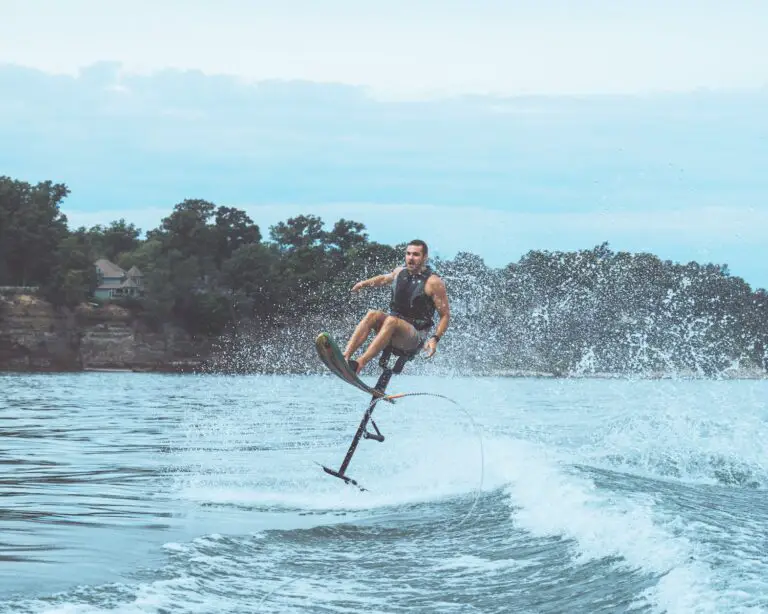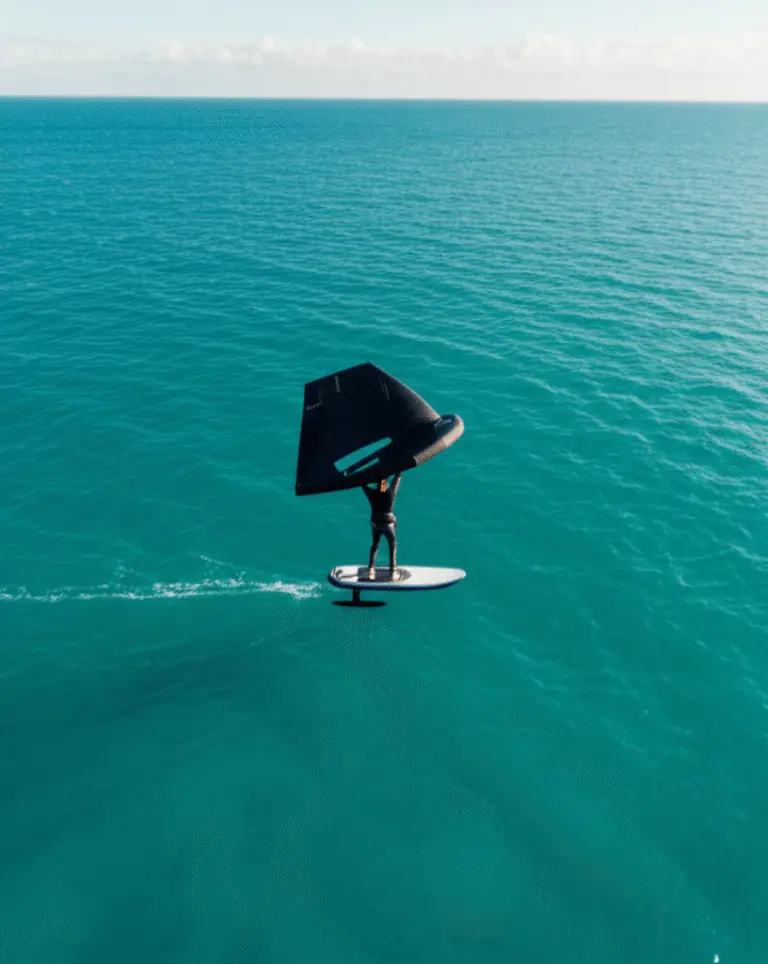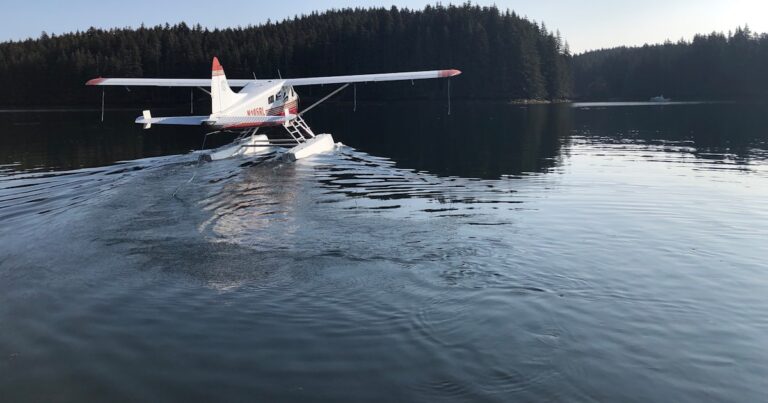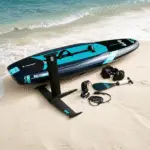Support our hydrofoil educational content for free when you purchase through links on our site. Learn more
How Do You Ride a Hydrofoil Behind a Boat? 10 Pro Tips (2025) 🏄♂️
Ever wondered what it feels like to fly just inches above the water, powered by nothing but a boat’s steady pull? Riding a hydrofoil behind a boat is exactly that—a surreal blend of surfing, flying, and pure adrenaline. But don’t let the sleek look fool you; mastering this art takes more than just holding on to a rope. We’ve been there, wiping out, laughing, and finally soaring, and in this guide, we’re sharing 10 pro tips that will have you gliding like a seasoned hydrofoiler in no time.
Curious about the best gear to get started? Or how to balance your weight perfectly to avoid those dreaded wipeouts? Stick around, because later we’ll break down the top hydrofoil brands, reveal safety hacks that could save your skin, and even dive into the tech gadgets that can elevate your ride. Whether you’re a wakeboarder looking to level up or a complete newbie, this article is your ultimate hydrofoil behind-the-boat playbook.
Key Takeaways
- Start slow and steady: Ideal boat speeds for beginners range between 9-12 mph to build confidence and balance.
- Use the right gear: A short mast and large front wing provide stability and easier lift-off.
- Master your stance: Proper foot placement and subtle weight shifts are crucial to controlling your foil’s height and direction.
- Safety first: Always wear a helmet and impact vest, and have a spotter on board.
- Choose the right boat and rope: Smooth acceleration and a longer tow rope make all the difference for a clean ride.
Ready to gear up? Check out our recommended hydrofoil wings and boards to kickstart your flying journey:
- 👉 Shop Slingshot Hydrofoil Wings: Amazon | Slingshot Official Website
- Explore Naish Thrust Wings: Amazon | Naish Official Website
- Find Impact Vests: Amazon | Liquid Force Official Website
Table of Contents
- ⚡️ Quick Tips and Facts About Riding a Hydrofoil Behind a Boat
- 🌊 Hydrofoil Surfing Behind a Boat: A Brief History and Evolution
- 🛠️ Essential Gear and Equipment for Hydrofoiling Behind a Boat
- 🏄♂️ Step-by-Step Guide: How to Ride a Hydrofoil Behind a Boat
- 💨 Mastering Speed and Balance: Tips for Smooth Hydrofoil Riding
- ⚓ Boat Selection and Setup: What Makes the Perfect Tow Boat for Hydrofoiling?
- 🔧 Hydrofoil Maintenance and Post-Ride Care: Keep Your Gear in Top Shape
- 🛟 Safety First: Crucial Safety Tips for Hydrofoiling Behind a Boat
- 📱 Tech Talk: Using Apps and Gadgets to Enhance Your Hydrofoil Experience
- 🔥 Expert Insights: Common Mistakes and How to Avoid Them
- 🌟 Top Hydrofoil Brands and Models for Boat Towing: Our Recommendations
- 🎥 Video Tutorials and Resources: Learn from the Pros
- 🤔 Frequently Asked Questions About Hydrofoiling Behind a Boat
- 🏁 Conclusion: Ready to Ride the Hydrofoil Wave Behind Your Boat?
- 🔗 Recommended Links for Hydrofoil Enthusiasts
- 📚 Reference Links and Further Reading
Body
⚡️ Quick Tips and Facts About Riding a Hydrofoil Behind a Boat
Welcome, fellow water-worshippers, to the Hydrofoiling™ guide on one of the most magical experiences you can have on the water. Learning how to ride a hydrofoil behind a boat is your ticket to what feels like flying, and we’re here to be your wingmen. Hydrofoiling behind a boat opens up a universe of possibilities, turning even the choppiest lake day into a smooth, buttery glide.
Before we dive deep, here are some quick hits to get you started:
- Slow and Steady Wins the Race: Your ideal learning speed is between 9-12 mph. This isn’t wakeboarding; speed is not the goal initially.
- Mast in the Back: When setting up your foil for the first time, position the mast as far back in the track box as possible. This makes the board more stable and less likely to lift before you’re ready.
- **Front Foot is
🏁 Conclusion: Ready to Ride the Hydrofoil Wave Behind Your Boat?
So, there you have it — the ultimate roadmap to mastering the art of hydrofoiling behind a boat. From the slow, deliberate acceleration to the subtle weight shifts that keep you gliding like a pro, we’ve unpacked the secrets that turn beginners into hydrofoil whisperers. Remember, the magic lies in patience and practice. That first lift-off? It’s like catching lightning in a bottle — a mix of thrill, balance, and a pinch of “did I really just do that?”
If you’re eyeing gear, our top picks like the Slingshot Infinity series and Naish Thrust wings offer a perfect blend of stability and responsiveness for beginners and intermediates alike. They’re designed to give you confidence on the water while still pushing your limits. The short mast setup is your best friend early on, helping you handle wakes and chop without feeling like you’re on a bucking bronco.
And what about those moments when the foil breaches or you wipe out? We’ve been there — falling away from the board is your safest bet, and always wear a helmet and impact vest to keep the fun injury-free.
Remember that unresolved question about how to progress beyond the basics? Once you’re comfortable riding the wake and controlling your foil’s height, it’s time to experiment with longer masts, different wing sizes, and even rope-less riding. The journey from “I’m just hanging on” to “I’m flying free” is an epic one, and we’re stoked to be part of your ride.
Ready to get out there and fly? Let’s make waves! 🌊
🔗 Recommended Links for Hydrofoil Enthusiasts
-
Slingshot Infinity Series Wings:
Amazon | Slingshot Official Website -
Naish Thrust Hydrofoil Wings:
Amazon | Naish Official Website -
Liquid Force Supreme Impact Vest:
Amazon | Liquid Force Official Website -
Hydrofoil Boards (Various Brands):
Amazon | Lift Foils Official Website -
Recommended Books on Hydrofoiling:
🤔 Frequently Asked Questions About Hydrofoiling Behind a Boat
What are the basic steps to learn hydrofoil boarding behind a boat?
Learning to hydrofoil behind a boat involves a few key stages:
- Equipment Setup: Start with a short mast (15-24 inches) and a large, stable wing to provide lift at low speeds. Position the mast as far back on the board as possible for stability.
- Boat Speed: Maintain a slow, steady speed between 9-12 mph. This speed range is ideal for beginners to generate enough lift without overwhelming the rider.
- Body Position: Place your feet shoulder-width apart, with the front foot slightly ahead of the mast and the back foot near the tail. Keep knees bent and shoulders square to the board.
- Getting Up: Let the rope pull you up from a crouched position, applying pressure to the front foot to keep the foil submerged initially.
- Lifting Off: Gradually shift weight to your back foot to generate lift and “fly” above the water. Use subtle hip movements to control height and balance.
Practice these steps repeatedly, focusing on smooth, controlled movements rather than speed or tricks.
How do you position yourself on the hydrofoil board to maintain balance and stability?
Balance is all about weight distribution and subtle adjustments:
- Foot Placement: Your front foot should be just ahead of the mast base, applying steady pressure to keep the foil submerged. The back foot is near the tail, used to control lift by shifting weight backward or forward.
- Body Posture: Keep your knees bent and hips low, similar to a surfing stance, which helps absorb water movement.
- Upper Body: Shoulders should be square to the board and facing forward, with arms relaxed but ready to hold the tow rope firmly.
- Weight Shifts: Small, smooth shifts of weight between feet control the foil’s pitch and height. Avoid sudden or exaggerated movements to prevent breaching or losing balance.
This positioning is crucial for maintaining a steady ride and transitioning smoothly between gliding and lifting.
What are the key differences between riding a hydrofoil board and a traditional wakeboard?
Hydrofoiling and wakeboarding may look similar at a glance, but the experiences are worlds apart:
- Lift Mechanism: Hydrofoils generate lift underwater via wings, allowing the board to rise above the water surface, drastically reducing drag. Wakeboards stay on the water’s surface, relying on the boat’s wake for momentum.
- Speed and Smoothness: Hydrofoils can maintain smooth rides at lower speeds and in choppier conditions, while wakeboards require higher speeds and cleaner wakes.
- Balance and Technique: Hydrofoiling demands more subtle weight shifts and balance control, as you’re essentially flying on a wing underwater. Wakeboarding is more about carving and jumping off the wake.
- Equipment: Hydrofoil boards have a mast and wing assembly, are generally longer, and often have foot straps or hooks. Wakeboards are shorter and strap-in focused.
Understanding these differences helps set realistic expectations and tailor your learning approach.
What safety precautions should I take when learning to ride a hydrofoil board behind a boat?
Safety is non-negotiable when hydrofoiling:
- Wear Protective Gear: Always use a helmet and an impact vest designed for water sports to protect against falls and collisions.
- Use a Spotter: Have a dedicated spotter on the boat who can communicate with the driver and watch your progress.
- Clear Area: Choose a water area free of obstacles like swimmers, other boats, or shallow reefs.
- Practice Falling Safely: Learn to fall away from the board and foil to avoid injury from the sharp mast or wings.
- Use a Proper Tow Rope: A longer rope (around 75-90 feet) helps you stay clear of the boat’s turbulent wake.
- Communicate with Driver: Ensure the boat driver understands the importance of smooth acceleration and steady speeds.
By following these precautions, you minimize risks and maximize your fun on the water.
📚 Reference Links and Further Reading
- Mackiteboarding’s comprehensive guide on How to Wakefoil Behind the Boat
- Mackiteboarding’s Learning to Foilboard Behind the Boat
- Foiling Magazine’s expert article on How to Learn Hydrofoil Surfing
- Slingshot Sports official site: Slingshot Hydrofoil Wings
- Naish official site: Naish Thrust Hydrofoil Wings
- Lift Foils official site: Lift Hydrofoil Boards
For more expert insights and gear reviews, check out our Hydrofoil Equipment Reviews and Advanced Hydrofoiling Techniques sections at Hydrofoiling™.




